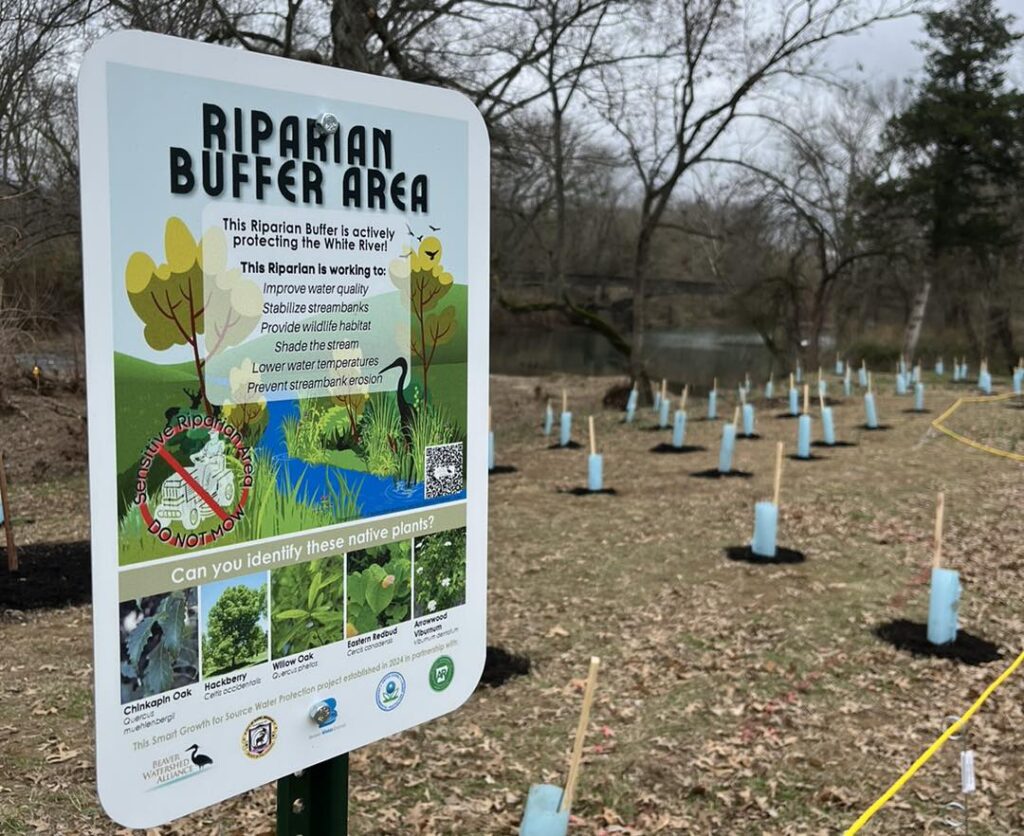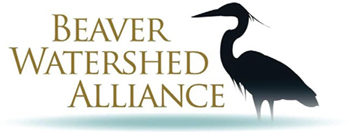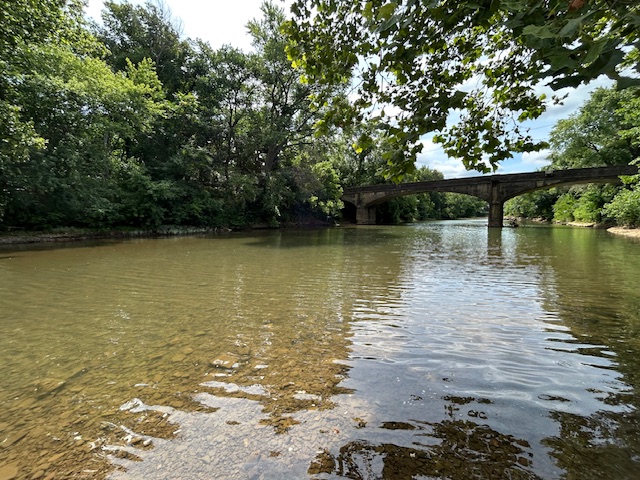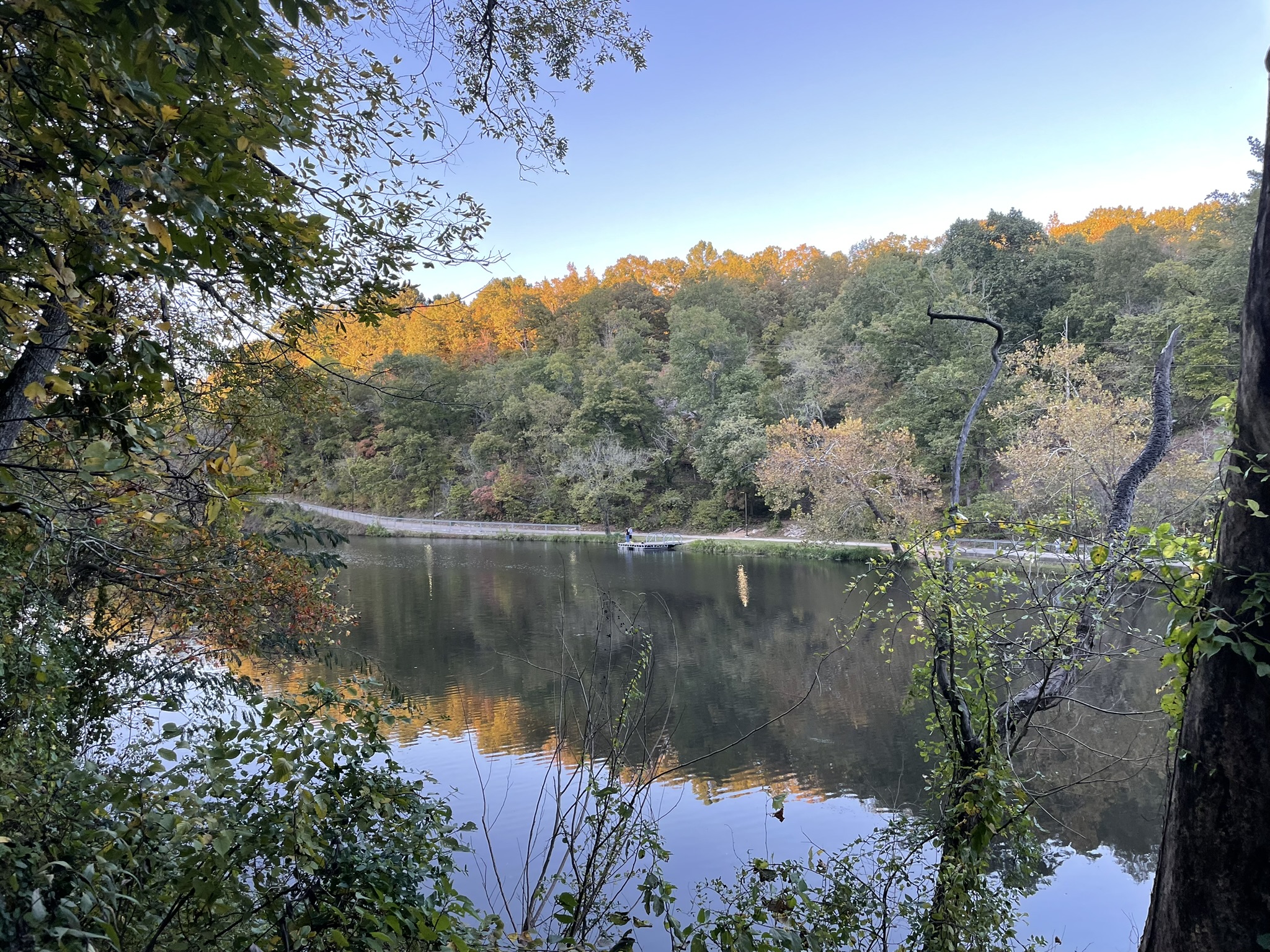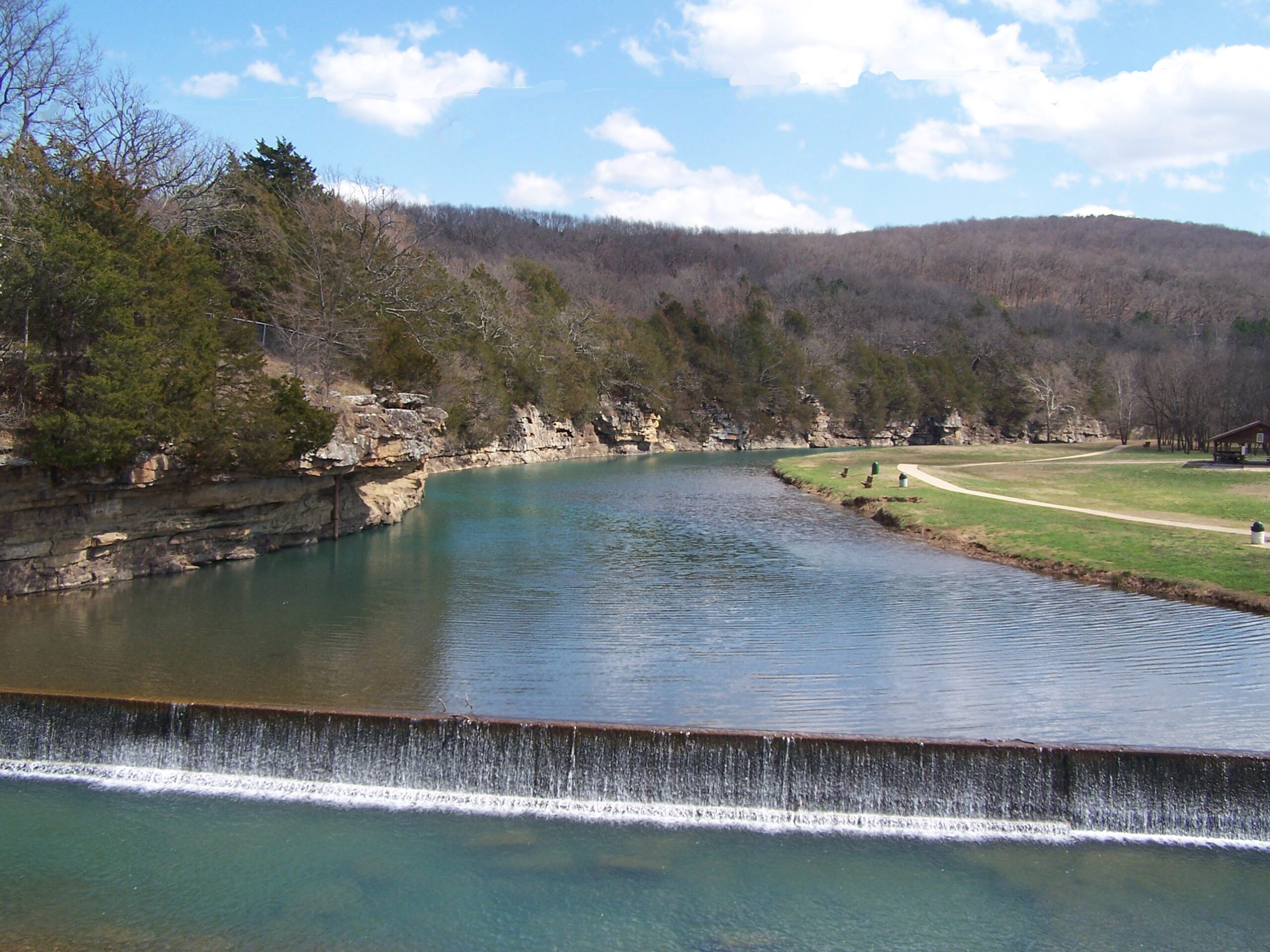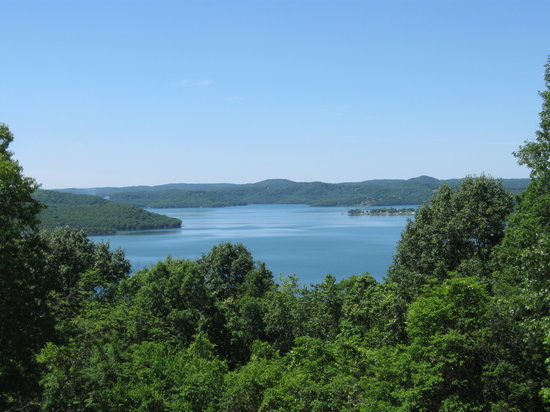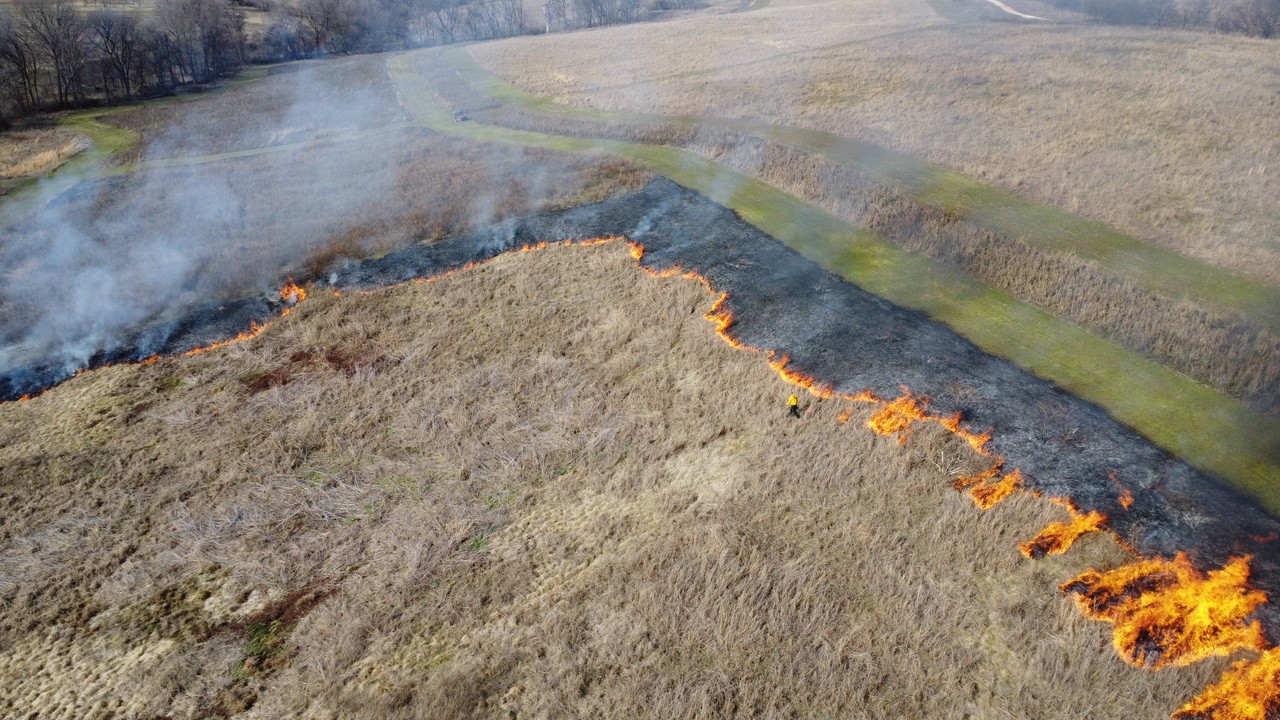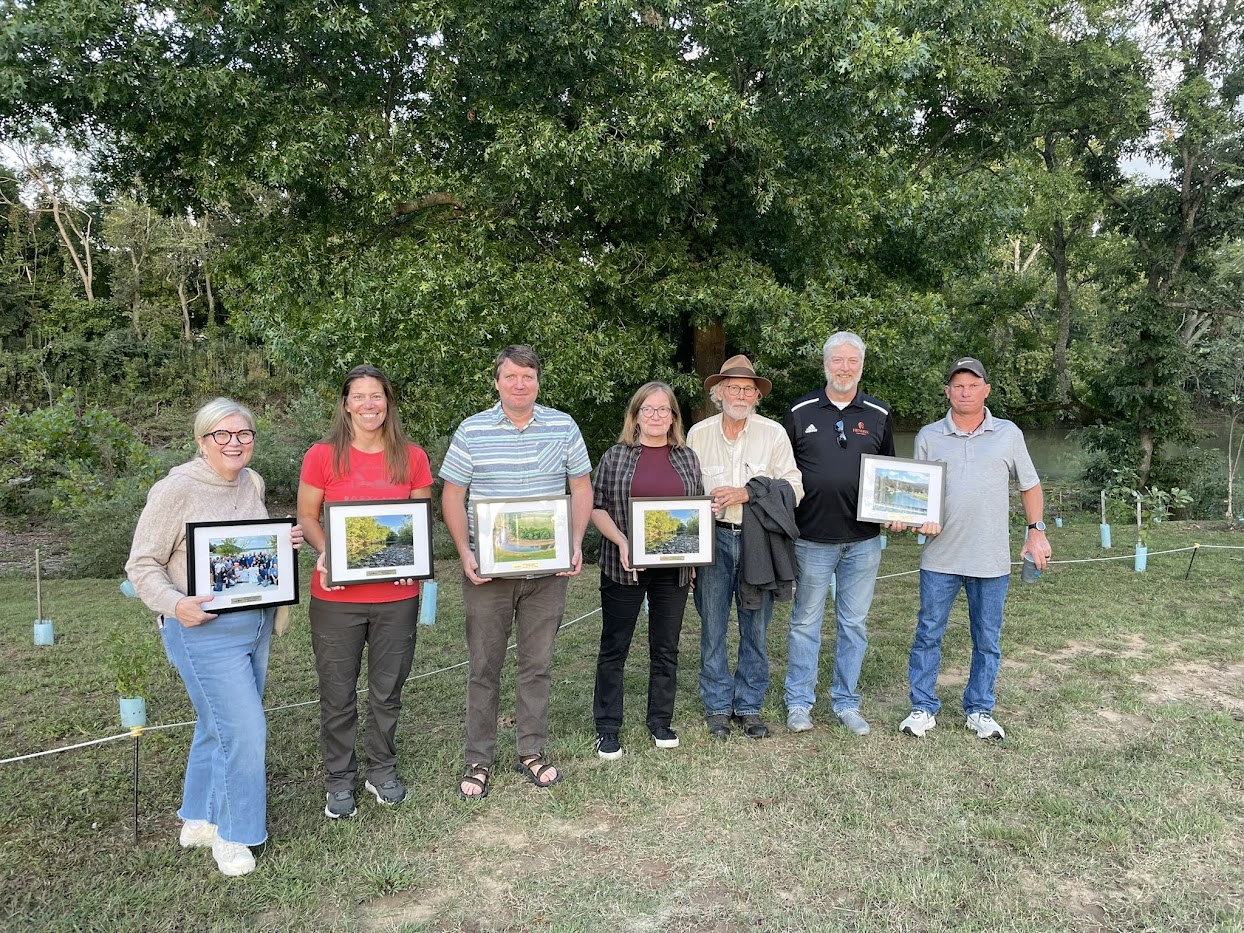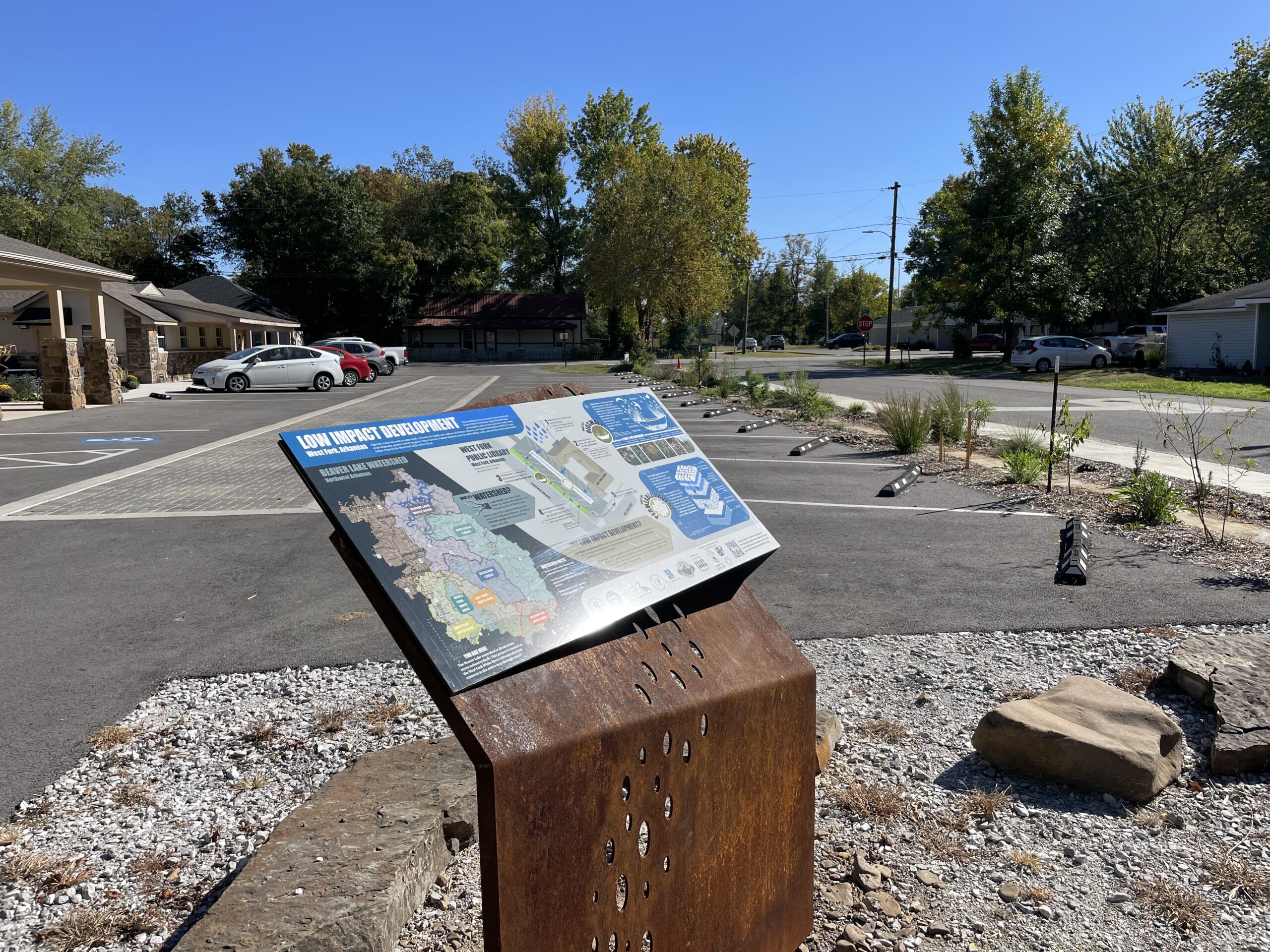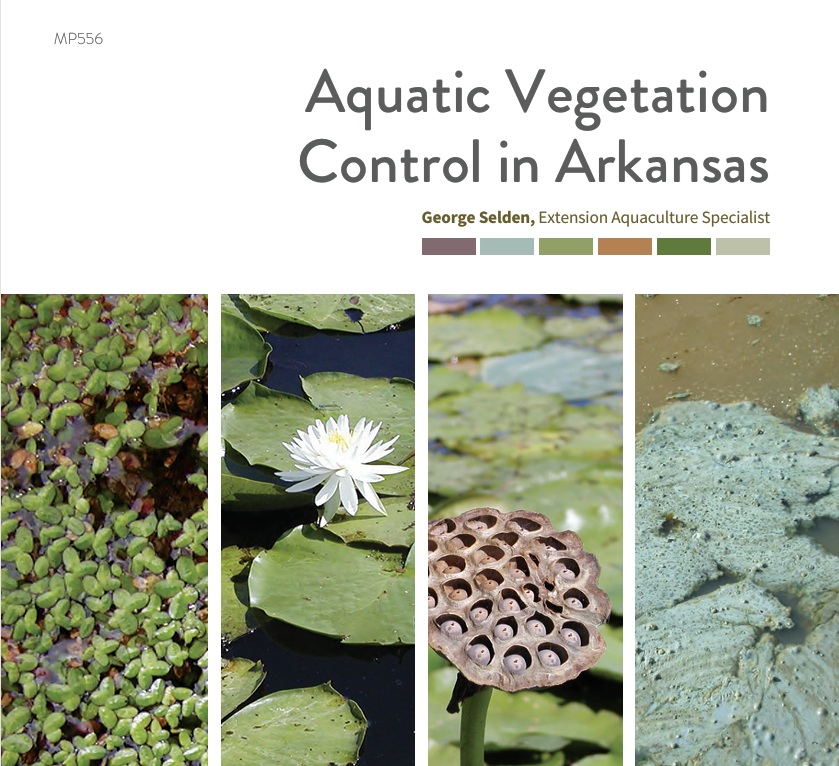Article submitted by Emily Finley, Urban Watershed Specialist
Did you know? Arkansas once had over 2 million acres of naturally open grassland habitat in Arkansas in the early 1800s. These open habitats have been generically referred to as “prairies” in the past. Many were true tallgrass prairies, but others would be more appropriately classified as glades or barrens.
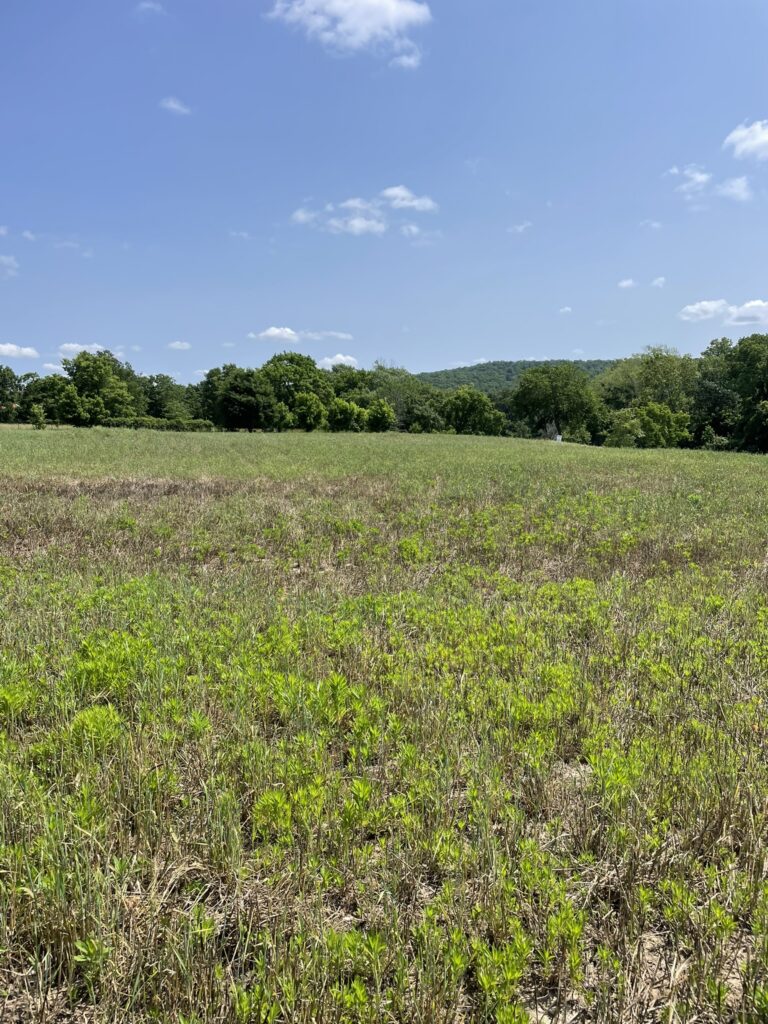
Today, less than 0.5 percent of Arkansas prairies exist, which is less than 430 acres.
Through an Arkansas Department of Agriculture – Natural Resources Division grant, the Beaver Watershed Alliance is working with the City of Elkins to “bring back the prairie” on an urban site adjacent to Bunch Park and the Elkins Community Center. This 3-acre site is home to a historic prairie, discovered through General Land Office (GLO) maps and local resources.
This restoration started in 2024, and typically, a prairie restoration takes about three years to establish. This site packs a lot of punch when it comes to the co-benefits of a nature-based solution in an urban city.
Native plant roots growing deep into the soil will prevent soil erosion and allow stormwater to infiltrate before it reaches the nearby East Fork of the White River, stopping potential pollutants from reaching the river and reducing stormwater flows, an important function of a floodplain. Native prairie plants such as Little Bluestem grass, Side-oats Grama grass, Purple Coneflower, Blanket Flower, Lanceleaf Coreopsis, and Prairie Blazingstar have been planted and will come alive with color each growing season, too! Prairies are also home for many pollinators, birds, amphibians, and other wildlife that will thrive in these forgotten landscapes. To add, this prairie is easily accessible by local schools and Bunch park, making this a great learning lab for students and community visitors.
What do we call this new prairie? Naming a place creates connection, fosters a sense of identity, and lends cultural and historical context to a site. The City of Elkins’ Parks and Recreation Committee compiled several options for the prairie’s name to be voted on by the community. Some of the names included “Elkins Heritage Prairie,” “River’s Edge Prairie,” and “White River Prairie.” The committee collected community feedback over the course of a several weeks, capturing more than 260 votes, and eventually declaring the winning name to be the… “White River Prairie!”
Special thanks to the Elkins Parks and Recreation Committee and the City of Elkins for their leadership on this project. Thank you also to project partners including the U.S. Environmental Protection Agency, Arkansas Department of Agriculture – Natural Resources Division, the City of Elkins, Ozark Ecological Restoration Incorporated, and Beaver Water District for their support.
For more information on this prairie restoration project, see the fact sheets below, email emily@beaverwatershedalliance.org, or visit us online at www.beaverwatershedalliance.org.
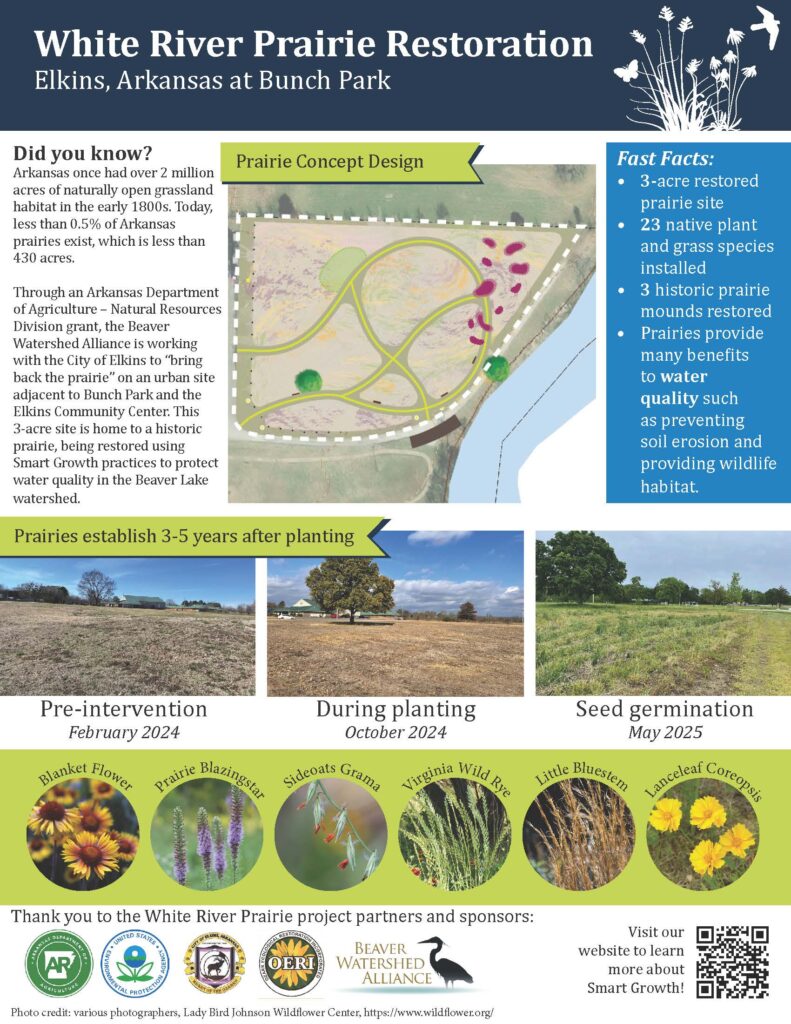

White River Prairie Restoration Fact Sheet
Bunch Park Riparian Restoration Fact Sheet
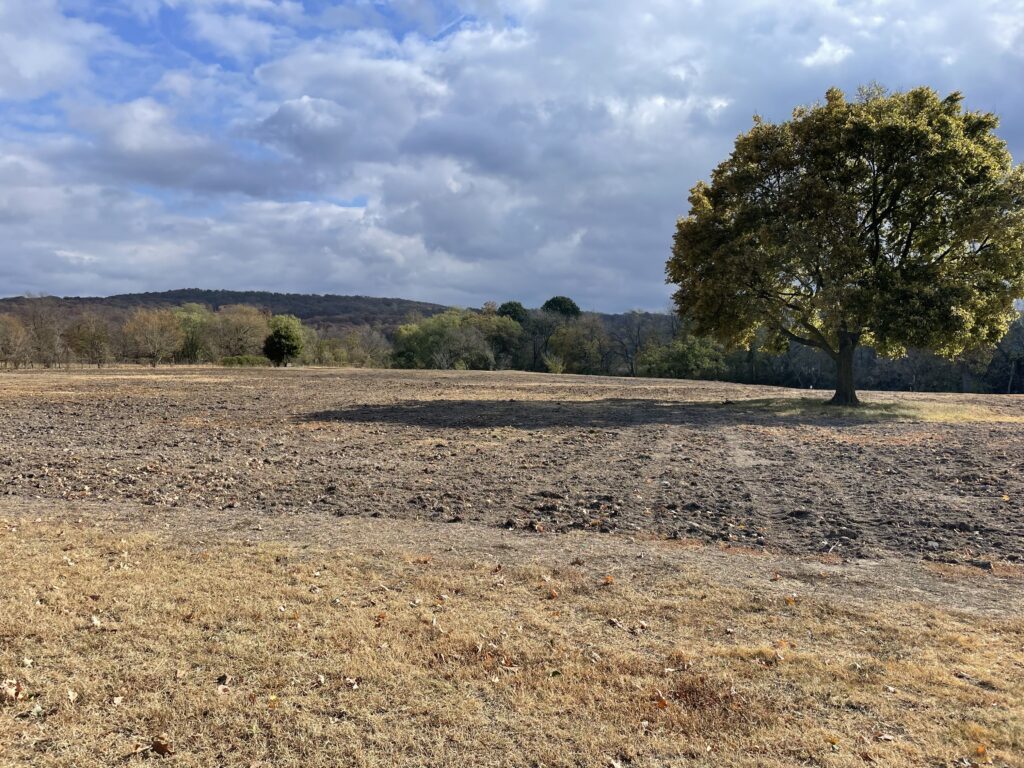
Planting the White River Prairie in October 2024.

Annual cover crop (Winter Wheat) covers the prairie during the winter months to protect the soil from eroding.
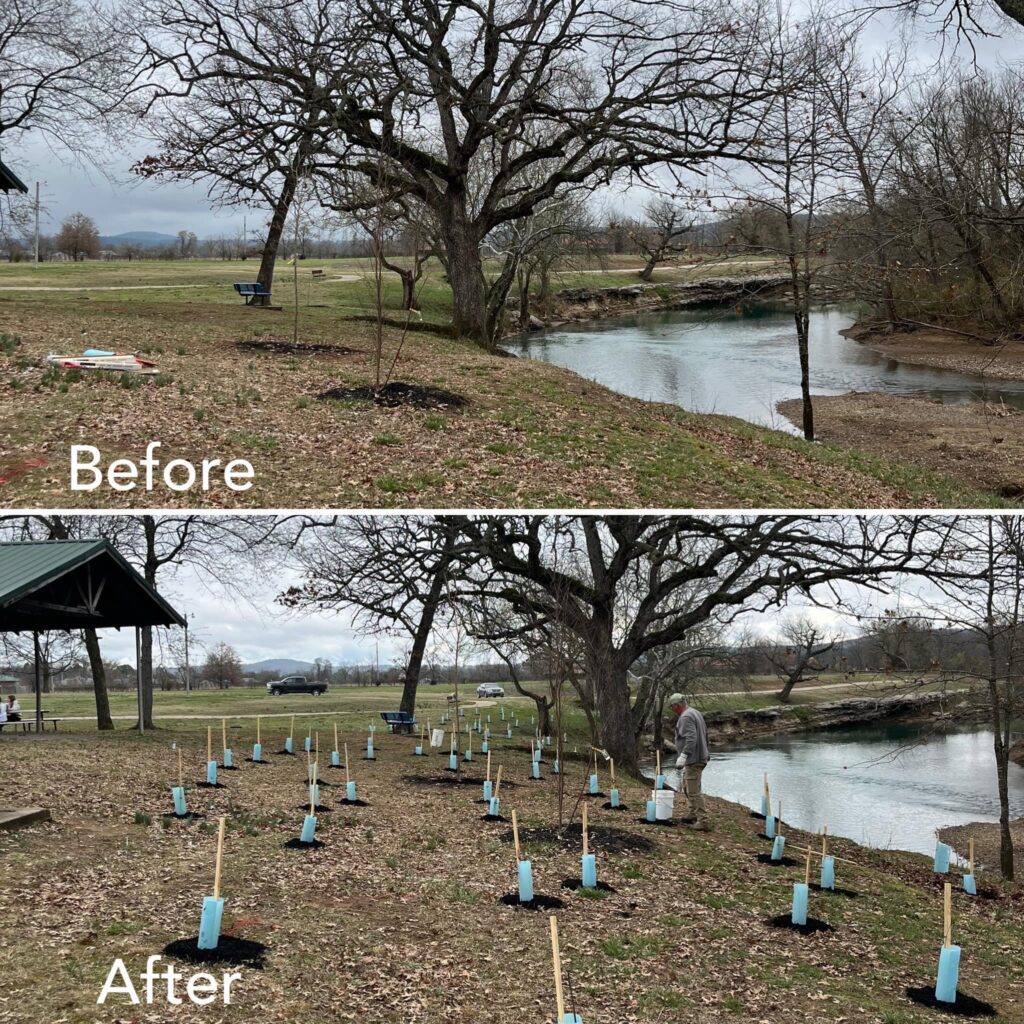
Before and After 160 tree seedlings were planted in the riparian zone at Bunch Park in Elkins, AR.
